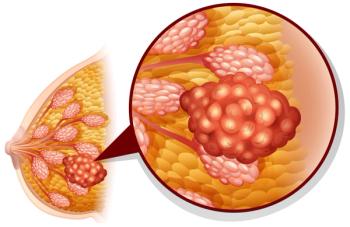
Cabazitaxel at Lowered Dose, Increased Frequency Reduces Neutropenic Complications in Older Patients With mCRPC
Based on findings from the phase 3 CABASTY trial, a fixed 16 mg/m2 dose of cabazitaxel every 2 weeks vs 25 mg/m2 every 3 weeks reduced neutropenic complications in elderly patients with mCRPC.
Results of the randomized phase 3 CABASTY trial (NCT02961257), which were recently presented at the
Patients in the lower-dose treatment cohort experienced a reduction in the incidence of grade 3 or greater neutropenia and/or neutropenic complications. Patients were randomized to receive either cabazitaxel every 3 weeks at 25 mg/m2 (n = 97) or 16 mg/m2 once every 2 weeks (n = 99). Grade 3 or greater neutropenia and/or other neutropenic complications were observed in 62.9% of patients in the every 3 week groups vs 5.1% receiving cabazitaxel once every 2 weeks.
A total of 196 patients enrolled in this trial. Patients 65 years of age and older were eligible if they had mCRPC that was previously treated with docetaxel and an androgen receptor–targeting agent, an ECOG performance status of 2 or lower, and a G8 geriatric screening score higher than 14 or 14 and under with reversible geriatric impairment. Patients were assigned to a dosing schedule of cabazitaxel plus a 10 mg daily dose of prednisone and G-CSF.
The primary end point was the incidence of grade 3 or greater neutropenia and/or neutropenic complications. Secondary end points included overall survival (OS), radiographic progression-free survival (rPFS), prostate-specific antigen (PSA) response, tumor response, time to symptomatic skeletal events, safety, health-related quality of life (HRQoL), and other biomarkers. The trial reported that these secondary efficacy end points were comparable between the 2 treatment arms.
There was no statistically significant difference in median rPFS, at 10.2 months (95% CI, 6.5-13.9) for patients in the every-3-week group and 8.5 months (95% CI, 6.1-11.8) for those in the every-2-week group (HR, 0.95; 95% CI, 0.70-1.31; P = .775). Median OS was similar across arms at 14.1 months (95% CI, 11.4-17.3) and 14.0 months (95% CI, 11.8-20), respectively (HR, 0.87; 95% CI, 0.63-1.20; P = .390). Corresponding rates of PSA responses of at least 50% were observed among 45.2% and 42.9% (P = .75); objective tumor responses were seen in 18.1% and 15.4% (P = .63).
Baseline characteristics were well balanced between the every-3-week and every-2-week arms, including median age (74.5 years vs 74.6 years, respectively), median PSA at randomization (57 ng/ml vs 62 ng/ml), and receipt of prior docetaxel (100% each). Most patients in both arms had an ECOG performance status of 0 or 1 (90.7% vs 93.9%), a G8 geriatric assessment score of 14 or higher (79.4% vs 80.8%), and experience with 2 or more prior lines of therapy (68.0% vs 78.3%).
In terms of the safety profile, 70 patients (72.9%) in the triweekly cabazitaxel arm experienced grade 3 or greater treatment-emergent adverse effects (TEAEs) vs 57 (58.1%) in the biweekly arm. There were 3 patients (3.1%) experiencing adverse effects (AEs) that led to death in the biweekly cabazitaxel arm vs 6 (6.1%) in the triweekly arm. The most common grade 3 or greater AEs observed in the triweekly cabazitaxel cohort were neutropenia (63.5%), leukopenia (20.8%), asthenia/fatigue (13.5%), anemia (12.5%), and lymphopenia (12.5%). For the biweekly cabazitaxel treatment arm, the most frequent AEs were asthenia/fatigue (9.2%), anemia, (9.2%), diarrhea (6.1%), and general health deterioration (5.1%).
Reference
Oudard S, Beuzeboc P, Voog E, et al. 1363MO - Cabazitaxel every 2 weeks versus every 3 weeks in older patients with metastatic castration-resistant prostate cancer (mCRPC): The CABASTY randomized phase III trial. Ann Oncol. 2022;33(suppl 7): S616-S652. doi:10.1016/annonc/annonc1070
Newsletter
Stay up to date on recent advances in the multidisciplinary approach to cancer.





















































































